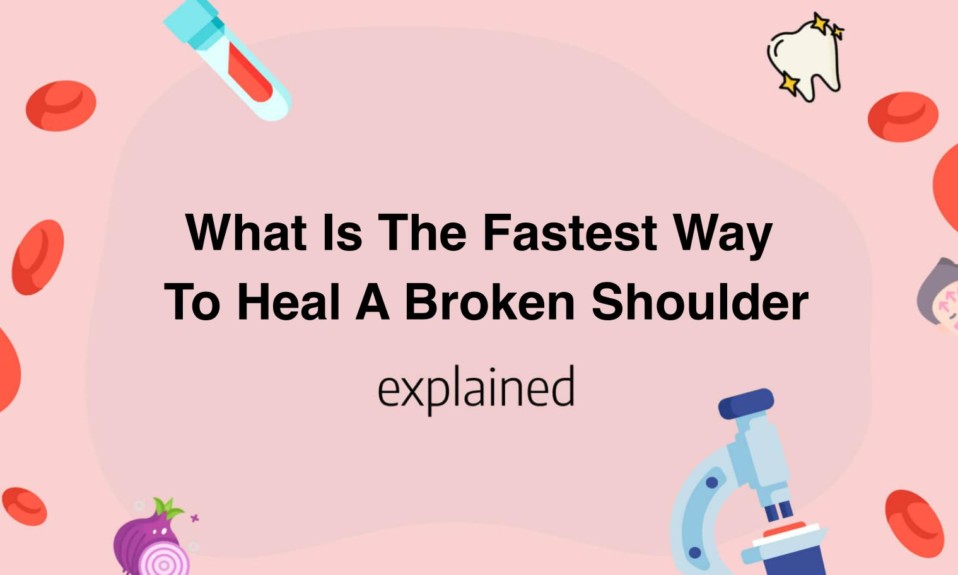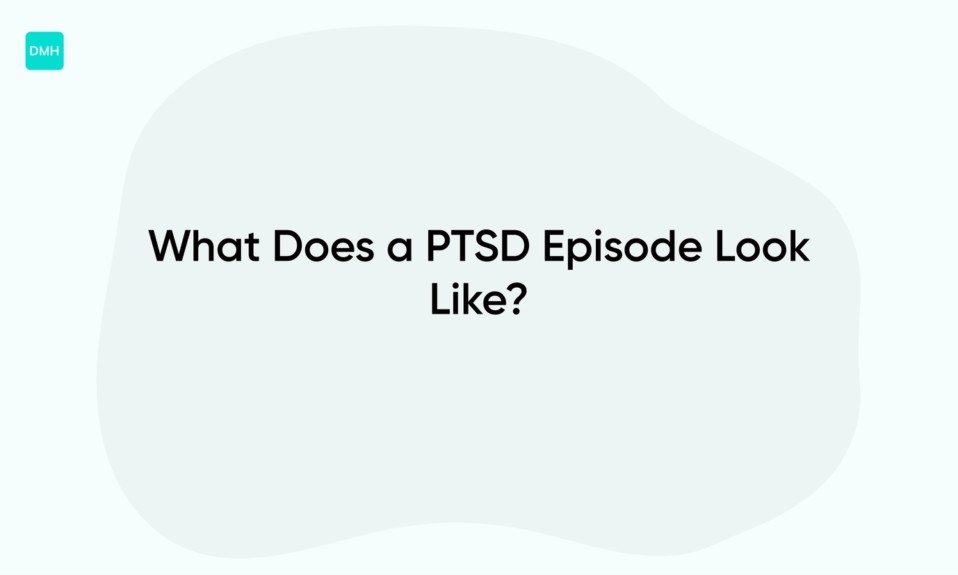If you’ve recently suffered from a broken shoulder, you’re likely wondering what the fastest way to heal is.
This injury can be excruciating and can pose a significant hindrance to your daily life, so it’s understandable why you’re seeking treatment options.
While there are various methods that could help you recover, there are a few tried-and-true ways to expedite the healing process.
In this guide, we’ll explore these methods and help you get back to your normal routine as soon as possible.
- Rest the injured shoulder and avoid exerting too much pressure on it.
- Use ice packs on the shoulder to alleviate inflammation and reducing swelling.
- Perform physical therapy exercises regularly to increase mobility and strength in the shoulder joint.
- Take NSAIDs or pain medications to help manage pain and inflammation.
- If necessary, consider surgical intervention to fix particularly severe or long-lasting shoulder fractures.
What Is The Fastest Way To Heal A Broken Shoulder
One of the most common injuries sustained by people are broken shoulders.
The injury can be brought about by a variety of circumstances such as sports accidents or falls.
In order to promote healing and restore movement, medical professionals recommend certain steps to take.
The fastest way to heal a broken shoulder is to incorporate surgical and non-surgical methods in a treatment plan.
- Immobilize the Arm – Proper immobility will protect the shoulder from additional damage during the healing process. Your doctor may recommend wearing a sling, which provides support and help keep the arm still.
- Use Ice Therapy – Applying cold compresses during the first 48 to 72 hours after the injury will help reduce pain, swelling, and inflammation. Wrap some crushed ice in a cloth and apply it to the affected area for about 20 minutes each session.
- Try Heat Therapy – Alternating heat and cold therapy may be a beneficial way to fast-track the healing process. Heat from a warm, damp towel or a hot water bottle can help increase flexibility of muscle tissue, ideal for the rehabilitation stage.
- Take Painkillers – To get relief from pain, you can take prescription or over-the-counter painkillers such as acetaminophen or ibuprofen. Note that prescription medications are available only if your pain is severe.
- Physical Therapy – During the recovery process, your doctor can recommend engaging in various physical therapy exercises that will help strengthen your muscles and restore shoulder movement gradually. Exercises can include arm rotations and range-of-motion movements.
Remember to stay focused on your goals and to notify your doctor if you sense any discomfort or increased pain.
Healing from a broken shoulder is a gradual process, but the earlier you take steps to promote healing, the sooner you can get back to your favorite activities.
Overview of a Broken Shoulder Injury
A broken shoulder injury can occur for a variety of reasons, from a fall to a car accident or a major blow to the shoulder region.
The injury can range in severity from a small fracture to a complete break of the shoulder bone.
Symptoms of a broken shoulder typically include pain, swelling, and difficulty moving the arm and shoulder, with visible bruising or deformity sometimes present.
In more severe cases, nerve and blood vessel damage can occur, causing additional symptoms such as numbness or tingling in the arm and hand.
The treatment for a broken shoulder injury will depend on the severity of the fracture.
For small fractures or breaks, immobilization using a sling or shoulder immobilizer can be enough to allow for proper healing.
For more severe fractures, surgery may be required to realign the bones and stabilize the shoulder joint.
Along with medical treatment, it is important to engage in physical therapy to regain strength and range of motion in the shoulder.
Recovery time for a broken shoulder injury can vary depending on the severity of the fracture and the patient’s overall health.
Generally, it can take several months for a broken shoulder to fully heal, with physical therapy starting soon after the injury occurs.
During the recovery period, it is important to follow all medical advice and to avoid activities that could cause additional injury to the shoulder.
Prevention of a broken shoulder injury can include simple measures such as wearing protective gear during sports, using caution when walking on slippery surfaces, and avoiding risky behaviors such as excessive drinking or drug use, which can increase the risk of falls and accidents.
Overall, a broken shoulder injury can be a painful and difficult experience, but with proper treatment and care, patients can typically expect to make a full recovery and resume normal daily activities over time.
Common Causes of Shoulder Fractures
Fractures in the shoulder occur when any of the bones that make up the shoulder joint break or crack.
Falls and direct blows to the shoulder are the most common causes of shoulder fractures.
In the elderly population, a fall from standing height can also cause a shoulder fracture.
One group that is at risk for shoulder fractures is athletes who participate in contact sports such as football, rugby, and hockey.
These sports can result in direct impact to the shoulder joint, causing fractures in the bone.
Another group at risk for shoulder fractures are individuals who have osteoporosis, a medical condition that results in weakened bones.
In these individuals, even a minor fall can result in a shoulder fracture.
Heavy physical activity, such as lifting heavy objects, can also cause shoulder fractures.
There are different types of shoulder fractures, including clavicle fractures, scapula fractures and proximal humerus fractures.
A clavicle fracture is a break in the collarbone that connects the shoulder blade to the breastbone, while a scapula fracture is a break in the shoulder blade bone.
A proximal humerus fracture is a break in the bone at the top of the arm near the shoulder joint.
The type of fracture depends on the location and severity of the injury.
Symptoms of a shoulder fracture include severe pain, swelling, and bruising.
Individuals suffering from shoulder fractures may also experience difficulty moving their arm or feeling numbness in the affected area.
Treatment for a shoulder fracture may include using a sling or brace to immobilize the joint, medications for pain relief, and physical therapy to help improve range of motion and strength.
In severe cases, surgery may be required to fix the broken bone.
In conclusion, shoulder fractures can result from a variety of factors, including falls, direct blows, osteoporosis, and heavy physical activity.
Athletes participating in contact sports are also at increased risk for shoulder fractures.
It is important to seek medical attention if you think you may have a shoulder fracture, to prevent further complications and speed up the healing process.

Signs and Symptoms of a Broken Shoulder
The shoulder is one of the most flexible joint in your body and an essential part of your movement and daily activities.
Unfortunately, it is also one of the most complex joints, which puts it at risk for various injuries.
A broken shoulder occurs when one of the bones in the shoulder has been fractured due to direct impact or trauma, or as a result of an underlying condition like osteoporosis.
One of the most pressing signs and symptoms of a broken shoulder is severe pain.
You may experience sharp and intense pain in the shoulder that worsens when you try to move it.
Additionally, swelling and bruising may occur around the shoulder area and down to the upper arm, making it difficult to move your arm in certain directions.
Another common symptom of a broken shoulder is weakness or numbness in the affected arm.
This occurs due to damage to the surrounding nerves or the inability to move the shoulder properly.
You may also notice a grinding or cracking sensation when you move your shoulder or the presence of a deformity or lump where the fracture occurred.
In some cases, the shoulder may feel stiff and difficult to move at all, making it impossible to perform routine daily activities.
If you suspect that you may have a broken shoulder, it is essential to seek medical attention immediately.
Delaying treatment can result in prolonged pain, a worsening of symptoms, and more severe complications.
Depending on the severity of your injury, treatment options may range from rest and immobilization to surgery and physical therapy.
Your healthcare provider may also provide you with medications for pain relief and inflammation to make the healing process more comfortable.
In short, a broken shoulder is a severe injury that requires immediate attention.
If you experience any of the signs and symptoms mentioned above, make sure to seek medical attention as soon as possible.
Remember, early diagnosis and treatment are the keys to a successful recovery.
You’ll also like: Wide Rib Cage: Causes, Symptoms & Treatment
Immediate Treatment for a Broken Shoulder
When you break your shoulder, the pain can be excruciating.
However, it’s crucial to stay calm and take immediate action to prevent worsening of the injury and alleviate the pain.
Here are the essential steps for treating a broken shoulder immediately:
- Support the Injured Shoulder: Use a sling or any piece of cloth to support the injured shoulder carefully. This will prevent you from moving the shoulder unnecessarily, which can worsen the pain and damage the surrounding tissues.
- Apply Ice Pack: Apply an ice pack on the injured area for 15-20 minutes every 2-3 hours for the first 48-72 hours. The ice-pack can help minimize swelling and inflammation in the injured shoulder area, which can alleviate some of the pain.
However, make sure that the ice pack isn’t in direct contact with the skin and separated by a thin cloth or towel, to prevent skin damage. - Take Painkillers: Painkillers such as ibuprofen, acetaminophen, or aspirin can help alleviate the pain from the broken shoulder. However, consult with a doctor before taking any medication to avoid any side effects and possible allergic reactions.
- Seek Medical Attention: It’s crucial to visit a medical professional as soon as possible after the injury. They are equipped with the skill and knowledge to provide the appropriate treatment and care for the broken shoulder.
It’s crucial to minimize the movement of the injured shoulder to prevent further damages and aid in the healing process.
Medical attention can help prevent further damage, aid in the healing process, and provide long-term recovery options for the injury.
In conclusion, breaking your shoulder can be an extremely painful and traumatic experience.
Immediate action such as supporting the shoulder, applying an ice pack, taking pain killers, and seeking medical attention can significantly reduce pain, prevent further injury, and promote healing.
Remember, always seek medical attention for any significant injury, and follow the prescribed treatment plan for the full recovery of your injury.
Read also: How Long Does A Sprained Knee Take To Heal
Fastest Natural Ways to Heal a Broken Shoulder
The fastest natural ways to heal a broken shoulder are crucial for a quick recovery.
One of the primary options is rest.
It is essential to avoid using the affected shoulder to prevent further damage and speed up the healing process.
Additionally, ice packs can help reduce inflammation and swelling in the initial stages.
Compression is another natural remedy to promote healing and relieve pain.
This can be accomplished by wrapping a bandage around the affected area gently.
However, it is crucial not to wrap too tightly to avoid cutting off blood circulation.
A healthy diet can also aid in accelerating the healing process.
Foods rich in protein and Vitamin D are particularly beneficial.
Protein aids in repairing damaged tissues while Vitamin D helps the body absorb calcium, which is essential for bone strength.
Herbs and spices can also aid in reducing inflammation and promoting healing.
Turmeric, for instance, is known to possess anti-inflammatory properties, while garlic can help boost the immune system.
Physical therapy is a natural way to heal a broken shoulder.
It includes exercises that help expedite the recovery process and prevent stiffness in the shoulder joint.
The therapy also aims to improve muscle strength and flexibility, which can help prevent further injuries in the future.
However, it is crucial to solicit the services of a qualified physical therapist to ensure the exercises are safe and effective.
Lastly, getting enough sleep is vital for the healing process.
The body requires adequate rest to repair cells and regenerate new tissues.
Ensuring that you get at least eight hours of sleep per night can significantly speed up the healing process.
In conclusion, the natural remedies mentioned above can significantly accelerate the healing process and relieve pain associated with a broken shoulder.
However, it is crucial to seek medical attention to ensure that there is no severe damage.
Combining these remedies with proper medical care can help expedite the healing process.
Read also:










